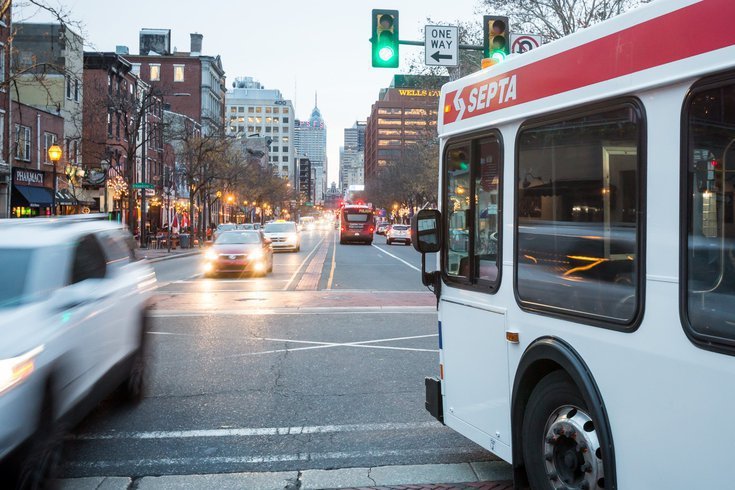
October 12, 2023
 Thom Carroll/for PhillyVoice
Thom Carroll/for PhillyVoice
A SEPTA study finds that AI-assisted cameras may better enforce illegal parking violations at bus stops and lanes in Philadelphia, possibly improving service times and rider safety.
Vehicles that are parked illegally in transit zones obstruct bus stops, endanger riders and cause service delays, SEPTA officials say. And the findings of an AI-based study, released Thursday, underscored these issues.
The 70-day study used AI-assisted cameras from Hayden AI to identify bus lane and stop violations on Routes 21 and 42, which are among SEPTA's busiest but slowest bus routes.
Route 21 runs from Penn's Landing to 69th Street Transportation Center in Upper Darby, mostly along Chestnut and Walnut streets in Philadelphia. Route 42 travels from Penn's Landing as far as the Wycombe stop in Upper Darby, mostly using Chestnut and Walnut streets in Center City and Spruce Street in West Philly.
Together, these routes carry more than 10,000 riders each weekday.
On a typical weekday, more than half of the bus stops on these routes were block at some point, the study found. On average, there were more than 4,000 weekly violations.
The study was conducted from April 20 to June 28. Cameras mounted on seven buses automatically detected illegally parked vehicles and captured images of them.
There were 36,392 bus stop and lane violations, with bus stop infractions outnumbering bus lane violations by an 8-to-1 ratio. About 1 in 5 illegally parked vehicles caused obstructions for multiple days. Vehicles with out-of-state license plates accounted for about one-fifth of all violations.
Illegal parking not only disrupts transit operations but also poses serious safety risks, particularly for seniors and riders with disabilities who rely on accessible boarding, SEPTA officials said. The study identified several areas with chronic obstructions that created service delays and safety risks, including the bus lanes on Chestnut Street in Center City.
"For people with disabilities, just one car blocking a bus stop creates a serious hazard," said Latoya Maddox, chairperson of the SEPTA Advisory Committee for Accessible Transportation. "This is a problem that has been tolerated for far too long, and we hope that action will be taken to change driver behavior and make the streets of Philadelphia safer for our community."
Service delays adversely impact access to jobs, education, health care, and other essential services, particularly for communities of color and low-income residents, SEPTA officials said. They also hamper the environmental benefits of public transportation by increasing emissions.
The study deemed the camera system a crucial solution to the illegal parking problem. Implementing the technology citywide could lead to a substantial reduction in parking violations, ultimately improving the safety, reliability and accessibility of bus services. Doing so would require City Council to approve an ordinance.
The technology used in the pilot has been successful in other cities, like New York, where it increased bus speeds by up to 40% and reduced bus collisions by up to 34% on certain routes.
The average speeds of the Route 21 and Route 42 buses were 8.5 and 8.7 mph, respectively, the study found. That's significantly less than national average of 13-14 mph. Previous research has found traffic congestion in Center City causes 1.7 million hours of passenger delays each year and adds $15.4 million to SEPTA's operating costs.